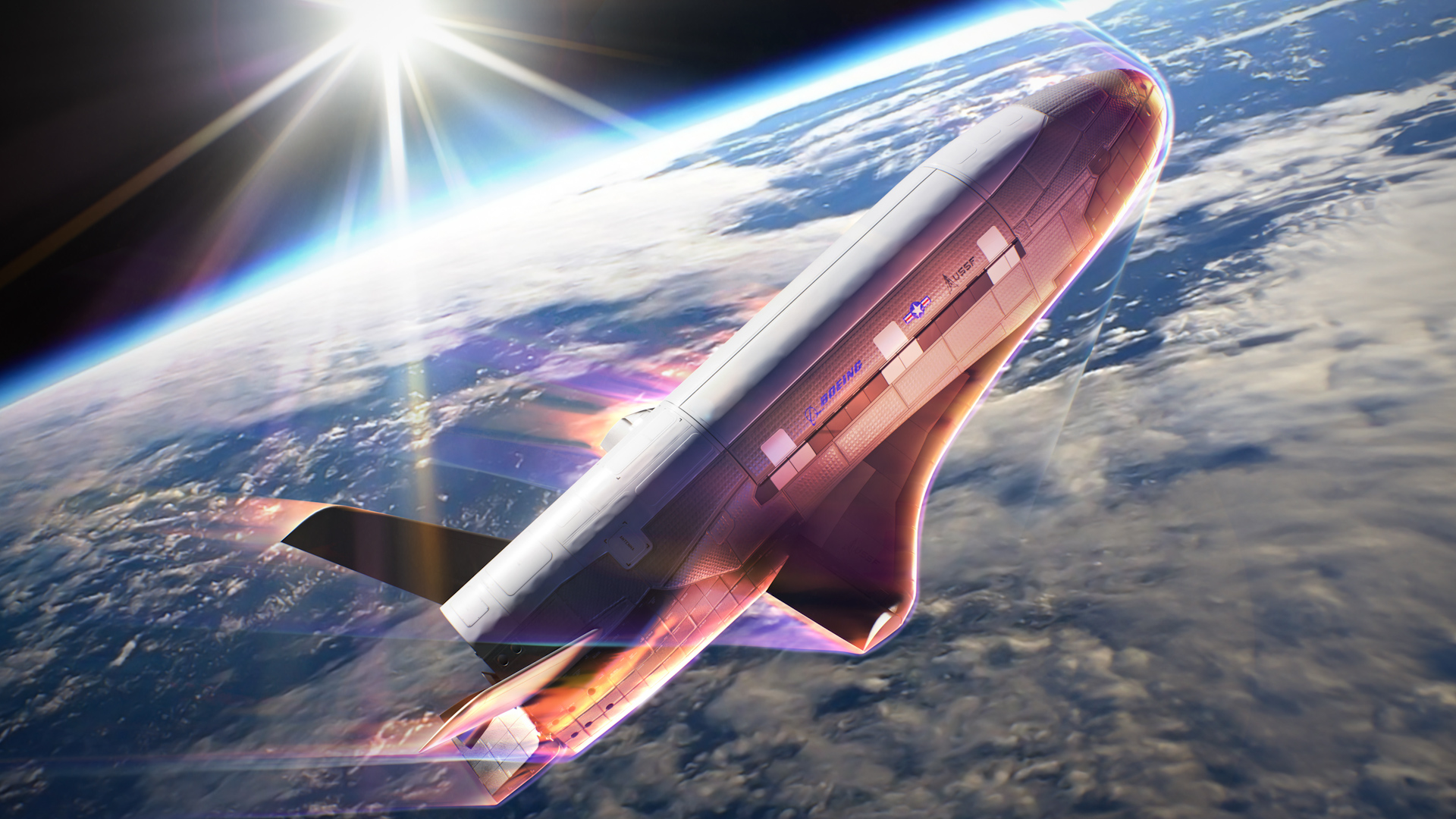
[Ryan Robertson]
THE U.S. MILITARY’S SUPER SECRETIVE X-37B SPACEPLANE IS BOLDLY GOING WHERE NO SPACE PLANE HAS GONE BEFORE– PERFORMING A FIRST-OF-ITS-KIND ORBITAL MANEUVER CALLED AEROBRAKING.
THE PROCESS USES ATMOSPHERIC DRAG INSTEAD OF FUEL TO GRADUALLY LOWER ITS ORBIT—A TECHNIQUE THAT COULD DRAMATICALLY EXTEND MISSION DURATIONS AND REDUCE OPERATIONAL COSTS.
THE UNMANNED X-37B LAUNCHED ON ITS SEVENTH MISSION IN DECEMBER 2023. IT HITCHED A RIDE INTO ORBIT ABOARD A SPACEX FALCON HEAVY ROCKET. SINCE THEN, THE CRAFT OPERATED IN A HIGHLY ELLIPTICAL ORBIT, TRAVELING FAR BEYOND THE RANGE OF TYPICAL SATELLITES.
AS PART OF THE AEROBRAKING MANEUVER IT’S CAREFULLY DIPPING INTO THE OUTER LAYERS OF EARTH’S ATMOSPHERE TO RESHAPE ITS TRAJECTORY. THIS PRECISION MOVE GENERATES INTENSE FRICTION, HEATING THE SPACECRAFT’S UNDERBELLY UNTIL IT GLOWS RED-HOT.
SO WHY DO IT? THIS MILESTONE DEMONSTRATES A SHIFT TOWARD MORE EFFICIENT AND FLEXIBLE WAYS TO NAVIGATE AND OPERATE IN SPACE. BY REDUCING RELIANCE ON FUEL, AEROBRAKING ENABLES LONGER MISSIONS AND GREATER ADAPTABILITY IN ORBIT. BOEING, WHICH DEVELOPED THE X-37B FOR THE U.S. DEPARTMENT OF DEFENSE, SAYS THE MANEUVER SAVES ENORMOUS AMOUNTS OF FUEL AND EXPANDS THE POTENTIAL OF REUSABLE SPACECRAFT.
AND WHILE MUCH ABOUT THE X-37B REMAINS CLASSIFIED, OFFICIALS CONFIRMED IT IS BEING USED FOR EXPERIMENTAL RESEARCH, INCLUDING STUDYING THE EFFECTS OF SPACE RADIATION ON VARIOUS MATERIALS.
FOR MORE OF OUR UNBIASED, STRAIGHT FACT REPORTING – BE SURE TO DOWNLOAD THE STRAIGHT ARROW NEWS APP TODAY, OR LOG ON TO SAN.COM.











